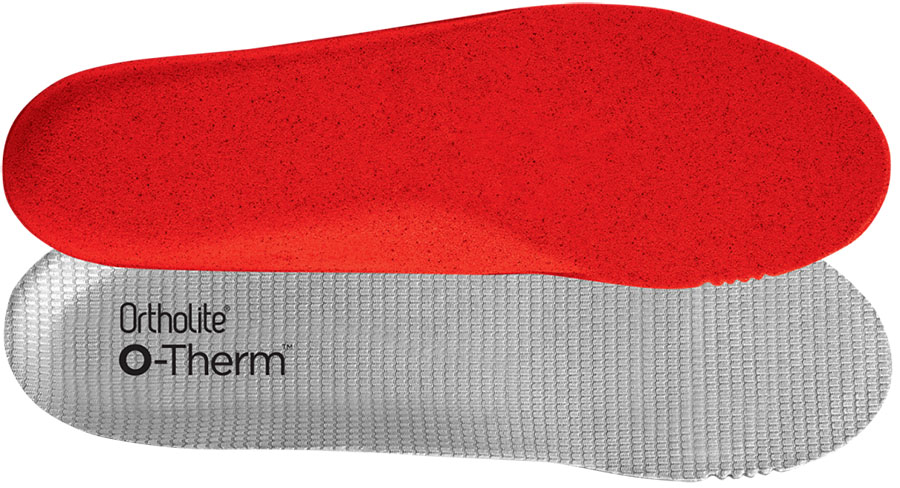OrthoLite’s O-Therm technology ushers in a new era of thermal protection, combining an open-cell PU-foam with aerogel’s weight savings and insulative properties—meaning feet stay warmer and more comfortable.
SGB Executive caught up with VP of Innovation Rob Falken to dive into its latest foot-betterment technology.

What’s unique about O-Therm, and how groundbreaking is it? It’s the world’s first open-cell PU foam where aerogel particles are functionalized into the PU foam matrix. Incorporating an advanced aerogel into PU chemistry lets it block cold without loft, and it doesn’t lose its function when compressed underfoot. It’s a wonder material that makes use of the smallest aerogel particle size (well below 50 microns), which, when meshed with our PU foam, creates a dustless solution that’s safe, stable and scalable.
What is aerogel? It’s a broad term that defines a diverse class of materials where the liquid component of a gel has been replaced with a gas without significant collapse of the gel structure. The result is a solid material, in this case a precursor powder ingredient, that is exceptionally porous and composed of up to 99.98 percent air by volume. Different types of silica aerogels exist within today’s industry, albeit with larger particle sizes than we use. A few general examples include building insulation and automobile shock-absorption.
Is it really the world’s lightest man-made material? Yes. Weighing only three times the weight of air, aerogels are the world’s most lightweight solid materials with the lowest solid density, without question. An adult human-sized block of aerogel would only weigh around one pound.
And do feet stay warmer? Yes, but with a caveat: staying “warmer” is a personal perception since all people perceive cold differently. To date, countless wear-testers have reported nothing but positive feedback in our trials.
How did you quantify its thermal performance? We subscribe to a testing methodology whereby a block of dry ice (-78˚C) is put in direct contact with an O-Therm insole. A simulated human foot with applied pressure is placed onto the insole, with temperature readings taken from the insole’s top surface and the ice block over time. This rules out variability, and we third-party validate all of our results with an accredited laboratory.

Is this a big deal in the world of insoles? To date, insole insulation has typically consisted of materials like wool, metalized foils or lofted fiber battings, each of which has strengths and weaknesses. O-Therm removes the need for loft while increasing the insole’s thermal properties exponentially. Shoe designers can now shed bulk from their designs while outperforming on insulation. Going lighter and thinner with better insulation is what makes O-Therm such a big deal. Imagine seeing a ski or snowboard boot where the boot liner is molded entirely from O-Therm. It can be thinner, increasing the range of motion while also being lighter to reduce swing weight while being the most effective thermal barrier out there.
How have sales been during the pandemic, and how are they looking for 2021? As a vertically integrated company, we’re fortunate to have redundant chemical systems-houses and foaming and manufacturing facilities to mitigate risks that might impact our supply chains. We were able to allocate and plan capacities to navigate the pandemic, delivering on time throughout China, Southeast Asia and beyond. Last year we equaled our recording-setting 2019 season, and 2021 so far is far outpacing 2020.
What else does OrthoLite have up its sleeve? We have more than 20 additional technologies in various development stages in all categories, from sustainability to performance, function and value. We’re also expanding beyond insoles, which we’ll introduce in the coming months. We develop and deploy leading-edge product technology that’s scalable and deliverable on time and on budget, anywhere in the world.
Photos courtesy OrthoLite
















